
Overview
Sound level meters and calibrators play a crucial role in the construction industry for ensuring worker safety and compliance with noise regulations. These tools are used to measure and control noise levels generated by various construction activities.Sound level meters are employed to assess noise exposure levels for construction workers, helping to prevent hearing damage and promote a healthier work environment. They also assist in identifying noisy equipment or processes that may require noise mitigation measures.Calibrators are used to verify the accuracy of sound level meters, ensuring that measurements are reliable and in compliance with regulatory standards. Regular calibration is essential to maintain the integrity of noise data collected on construction sites.In summary, sound level meters and calibrators are indispensable tools in the construction industry, contributing to the protection of workers’ hearing health, adherence to noise regulations, and the overall safety and quality of construction projects.
Depending on specific features and functions, GAO Tek’s sound level meters & calibrators are sometimes referred to as Noise meters, Decibel meters, Acoustic meters, Sound measurement devices, Noise monitoring instruments, Sound intensity meters, Environmental noise analyzers, dB meters, Acoustic intensity meters, Industrial sound level meters, Noise level monitoring tools, Sound level monitoring equipment, Workplace noise meters, Occupational noise exposure meters, Noise assessment devices, Audio level meters, Precision sound level meters, Calibration tools, Noise compliance meters, Decibel calibration devices.
GAO Tek’s sound level meters & calibrators has the following applications in construction industry:
- Worker Safety: Ensuring that noise levels at construction sites are within permissible limits to protect workers from hearing damage.
- Noise Assessment: Measuring and assessing noise levels generated by construction equipment, processes, and activities.
- Compliance Monitoring: Ensuring compliance with local noise regulations and ordinances to avoid legal issues.
- Noise Mitigation: Identifying noisy equipment or processes that require noise reduction measures or engineering controls.
- Hearing Protection: Determining the need for and effectiveness of hearing protection devices for workers.
- Quality Control: GAO Monitoring noise emissions during construction to maintain quality standards and minimize noise pollution.
- Calibration Verification: Regularly calibrating sound level meters to ensure accurate and reliable measurements.
- Occupational Health: Assessing the impact of construction noise on workers’ overall health and well-being.
- Community Relations: Demonstrating commitment to minimizing construction-related noise disturbances to local communities.
- Noise Mapping: Creating noise maps of construction sites to understand and manage noise propagation.
- Record Keeping: Maintaining records of noise levels for compliance reporting and future reference.
- Project Planning: Incorporating noise data into project planning to optimize construction schedules and methods.
- Equipment Selection: Choosing quieter equipment and machinery to reduce noise emissions.
- Safety Audits: Conducting periodic noise level audits to ensure ongoing safety and compliance.
- Contractual Obligations: Fulfilling noise-related contractual obligations with clients or regulatory bodies.
- Training and Awareness: Using sound level meters to raise awareness among construction workers about noise hazards and safety measures.
- Risk Management: Identifying high-noise areas and activities to manage and mitigate potential risks.
- Emergency Response: Monitoring noise during emergency situations or equipment malfunctions to take prompt action.
- Research and Development: Supporting R&D efforts to develop quieter construction technologies and materials.
- Environmental Impact Assessment: Providing data for environmental impact assessments related to noise pollution from construction activities.
More information on sound level meters & calibrators and their applications in other industries can be found on
Environmental Sound Level Meters & Calibrators
This category page lists related products
Environmental Test Instruments
GAO Tek’s targeted markets are North America, particularly the U.S., Canada, Mexico, and Europe. Hence, in addition to English, this website gaotek.com is offered in other major languages of North America and Europe such as Spanish, French, German, Italian, Polish, Ukrainian, Romanian, Russian, Dutch, Turkish, Greek, Hungarian, Swedish, Czech, Portuguese, Serbian, Bulgarian, Croatian, Danish, Finnish, Norwegian, Slovak, Catalan, Lithuanian, Bosnian, Galician, Slovene, Latvian, Estonian, Welsh, Icelandic, and Irish.
Complying With Construction Industry Standards
GAO Tek’s sound level meters & calibrators comply or help our customers comply with the construction industry standards such as:
- ANSI/ASA S12.9-2014
- ISO 1996-2:2017
- OSHA 29 CFR 1926.52
- ISO 9613-2:1996
- ANSI S1.25:1992
- ASTM E1014-18
- IEC 61672-1:2013
- EPA Method 2H
- ASTM E337-13
- DIN 45657:2013
- IEC 60804:2000
- ISO 3740:2019
- NIOSH Manual of Analytical Methods (NMAM)
- ASTM E580-15
- ISO 11204:2010
- AS/NZS 1269.1:2005
- BS 5228-1:2009
- ISO 15667:2000
- OSHA 29 CFR 1910.95
- IEC 60651-1:2001
Complying With Government Regulations
GAO Tek’s sound level meters & calibrators comply or help our customers comply with the U.S. government regulations such as
- OSHA 29 CFR 1910.95
- OSHA 29 CFR 1926.52
- EPA Noise Pollution Control Act (42 U.S.C. 4901)
- NIOSH Criteria for a Recommended Standard: Occupational Noise Exposure (DHHS Publication No. 98-126)
- ANSI S12.9-2014
- ANSI S1.25:1992
- ANSI/ASA S12.17/Part 1-2017
- ANSI S12.18-1994
- ANSI S12.21-2004
- ANSI S3.1-1999
- ANSI S3.6-2004
- ANSI S3.20-2015
- ANSI S3.44-1996
- DOT Federal Highway Administration Noise Regulations (23 CFR 772)
GAO Tek’s sound level meters & calibrators comply or help our clients comply with the Canadian regulations such as
- CSA Z107.56-13
- CAN/CSA-Z107.53-94
- CAN/CSA-Z107.58-10
- ISO 1996-2:2017 (Adapted for Canadian use)
- Ontario Regulation 381/15 (Construction Projects)
- British Columbia Noise Regulation (Occupational Health and Safety Regulation)
- Quebec Regulation respecting occupational health and safety (RSST)
- Alberta Occupational Health and Safety Code (Noise Exposure)
- WorkSafeBC Occupational Health and Safety Regulation (Part 7 – Noise)
- Manitoba Workplace Safety and Health Regulation (Noise Exposure)
- Nova Scotia Occupational Health and Safety Regulations (Noise)
- New Brunswick Occupational Health and Safety Regulation (Noise)
- Saskatchewan Occupational Health and Safety Regulations (Noise)
- Newfoundland and Labrador Occupational Health and Safety Regulations (Noise)
- Prince Edward Island Occupational Health and Safety Regulations (Noise)
GAO Tek’s sound level meters & calibrators comply or help our clients comply with the Mexican regulations such as
- NOM-011-STPS-2001
- NOM-115-STPS-1994
GAO Tek’s sound level meters & calibrators comply or help our clients comply with the European regulations such as
- Directive 2003/10/EC (Noise at Work Directive)
- ISO 1996-2:2017 (Adapted for European use)
- IEC 61672-1:2013 (Electroacoustics – Sound Level Meters – Part 1)
- IEC 60942:2003 (Electroacoustics – Octave-Band and Fractional-Octave-Band Filters)
- EN 61672-1:2013 (Electroacoustics – Sound Level Meters – Part 1)
- EN 61672-2:2003 (Electroacoustics – Sound Level Meters – Part 2)
- ISO 9612:2009 (Acoustics – Determination of Occupational Noise Exposure)
- ISO 11200:2014 (Acoustics – Noise Emitted by Machinery and Equipment – Determination of Emission Sound Pressure Levels)
- ISO 3740:2019 (Acoustics – Determination of Sound Power Levels)
- ISO 3744:2010 (Acoustics – Determination of Sound Power Levels and Sound Energy Levels)
- ISO 3745:2012 (Acoustics – Determination of Sound Power Levels of Noise Sources Using Sound Intensity)
- ISO 4866:2010 (Acoustics – Hearing Protectors – Subjective Method for the Measurement of Sound Attenuation)
- ISO 717-1:2013 (Acoustics – Rating of Sound Insulation in Buildings and of Building Elements – Part 1)
- ISO 9613-2:1996 (Acoustics – Attenuation of Sound During Propagation Outdoors – Part 2)
Case Studies of Sound Level Meters & Calibrators in Construction Industry
Sound level meters & calibrators are sometimes called as Noise meters, Decibel meters, Sound measurement devices, Sound intensity meters, Acoustic meters, Noise monitoring instruments, Noise analyzers, dB meters, Sound testers, Audio level meters, Environmental noise meters, Occupational noise meters, Noise compliance tools, Acoustic measurement equipment, Precision sound meters, Noise level monitors, Sound gauges, Audio noise meters, Industrial noise meters, Calibrating devices.
Here are some practical examples of using sound level meters & calibrators in construction industry:
Measuring noise levels to assess potential hearing hazards for construction workers and ensuring that they use appropriate hearing protection.
Measuring and monitoring the noise generated by construction machinery and equipment to identify sources of excessive noise.
Ensuring that construction sites adhere to noise regulations and standards by regularly monitoring noise levels.
Determining the effectiveness of noise control measures such as barriers or acoustic enclosures around noisy equipment.
Identifying high-noise areas on construction sites and implementing safety protocols for workers in those areas.
Comparing noise emissions from different tools and equipment to choose quieter alternatives.
Incorporating noise data into project planning to schedule noisy activities during off-peak hours or in less densely populated areas.
Verifying that subcontractors and equipment suppliers meet noise level specifications stipulated in contracts.
Investigating and addressing noise complaints from nearby residents by objectively measuring noise levels.
Regularly calibrating sound level meters to maintain measurement accuracy and reliability.
Ensuring that hearing protection devices, such as earplugs and earmuffs, are effective by measuring noise levels within hearing protection zones.
Monitoring noise levels during demolition activities to ensure compliance with regulations and protect nearby residents.
Assessing noise from construction-related traffic, including trucks and heavy machinery, to mitigate its impact on surrounding areas.
Demonstrating a commitment to being a responsible neighbor by monitoring and reducing construction-related noise emissions.
Using sound level meters to monitor noise during emergency situations, such as equipment malfunctions or accidents, to ensure worker safety.
Conducting noise impact studies to assess the potential effects of construction activities on nearby businesses and communities.
Using sound level meters to raise awareness among construction workers about noise hazards and safety measures.
Maintaining records of noise measurements for compliance reporting and legal documentation.
Including noise level data in project documentation to provide evidence of compliance with noise regulations.
Providing data for environmental impact assessments related to noise pollution from construction activities.
GAO RFID Inc. RFID Hardware|RFID Systems, a sister company of GAO Tek Inc., is ranked as a top 10 RFID supplier in the world. Its RFID, BLE, and IoT products have also been widely used in construction industry.
Construction Industry | RFID Solutions
Use of Sound Level Meters & Calibrators With Leading Software And Cloud Services in Construction Industry
GAO Tek has used or has facilitated its customers to use GAO’s sound level meters & calibrators with some of the leading software and cloud services in their applications. Examples of such leading software and cloud services include:
- MATLAB
- LabVIEW
- Excel
- DataLogger
- NoiseTools
- Sound Level Analyzer Software
- PULSE LabShop
- NoiseScout
- BZ-7223 Sound Level Meter App
- Bruel & Kjaer’s Insight Analysis Software
- CadnaA
- Noise Sentinel
- ACOEM’s Sound Level Meter App
- OROS Modal Analysis Software
- R.A.S. Software Suite
GAO Tek’s sound level meters & calibrators and their applications in other industries are listed on this page.
Environmental Sound Level Meters & Calibrators
Other related products can be found at this category page
Environmental Test Instruments
Meeting Customers’ Demands
Large Choice of Products
In order to satisfy the diversified needs of their corporate customers, GAO Tek Inc. and its sister company GAO RFID Inc. together offer a wide choice of testing and measurement devices, network products, RFID, BLE, IoT, and drones.
Fast Delivery
To shorten the delivery to our customers, GAO has maintained a large stock of its products and is able to ship overnight within the continental U.S. and Canada, and fast delivery to Mexico and Europe from the nearest warehouse.
Local to Our Customers
We are located in both the U.S. and Canada. We travel to customers’ premises if necessary. Hence, we provide a very strong local support to our customers in North America, particularly the U.S., Canada and Mexico and Europe. Furthermore, we have built partnerships with some integrators, consulting firms and other service providers in different cities to further strengthen our services. Here are some of the service providers in construction industry we have worked with to serve our joint customers:
- XYZ Construction Consulting
- ABC Engineering Services
- BuildTech Integrators
- ConstructSafe Solutions
- EcoBuild Environmental Services
- SoundGuard Consultants
- SafetyFirst Contractors
- ProNoise Solutions
- Construction Compliance Partners
- Acoustic Engineering Experts
- GreenBuild Consultants
- Noise Control Innovators
- Sustainable Construction Solutions
- QualitySound Services
- Construction Safety Specialists
- Noise Reduction Technologies
- EcoPro Construction
- AcoustiSafe Consultants
- Construction Health & Safety Solutions
- Noise Management Professionals
GAO Has Many Customers in Construction Industry
The products from both GAO Tek Inc. and GAO RFID Inc. have been widely used in construction industry by many customers, including some leading companies. Here is more information on applications of GAO RFID Inc.’s products in construction industry.
Environmental Sound Level Meters & Calibrators
Here are some of the leading companies in construction industry:
- Bechtel Corporation
- Turner Construction Company
- Fluor Corporation
- Jacobs Engineering Group Inc.
- The Whiting-Turner Contracting Company
- Kiewit Corporation
- AECOM
- Skanska USA
- Gilbane Building Company
- PCL Construction Enterprises, Inc.
- Hensel Phelps
- McCarthy Building Companies, Inc.
- Aecon Group Inc.
- PCL Construction
- EllisDon Corporation
- SNC-Lavalin Group Inc.
- Graham Construction
- Bird Construction Inc.
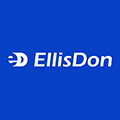


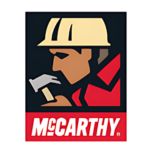
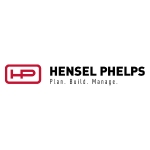
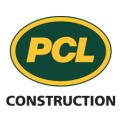
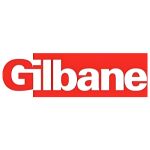


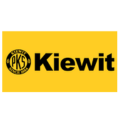
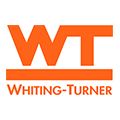
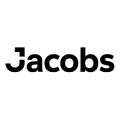
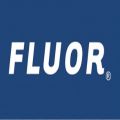
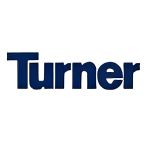
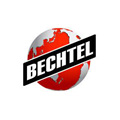

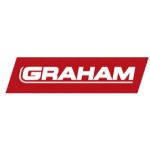

Contact Us
If you are interested in our products, services or partnering with us, please feel free to contact us by filling out this form:
or email us at sales@gaotek.com
